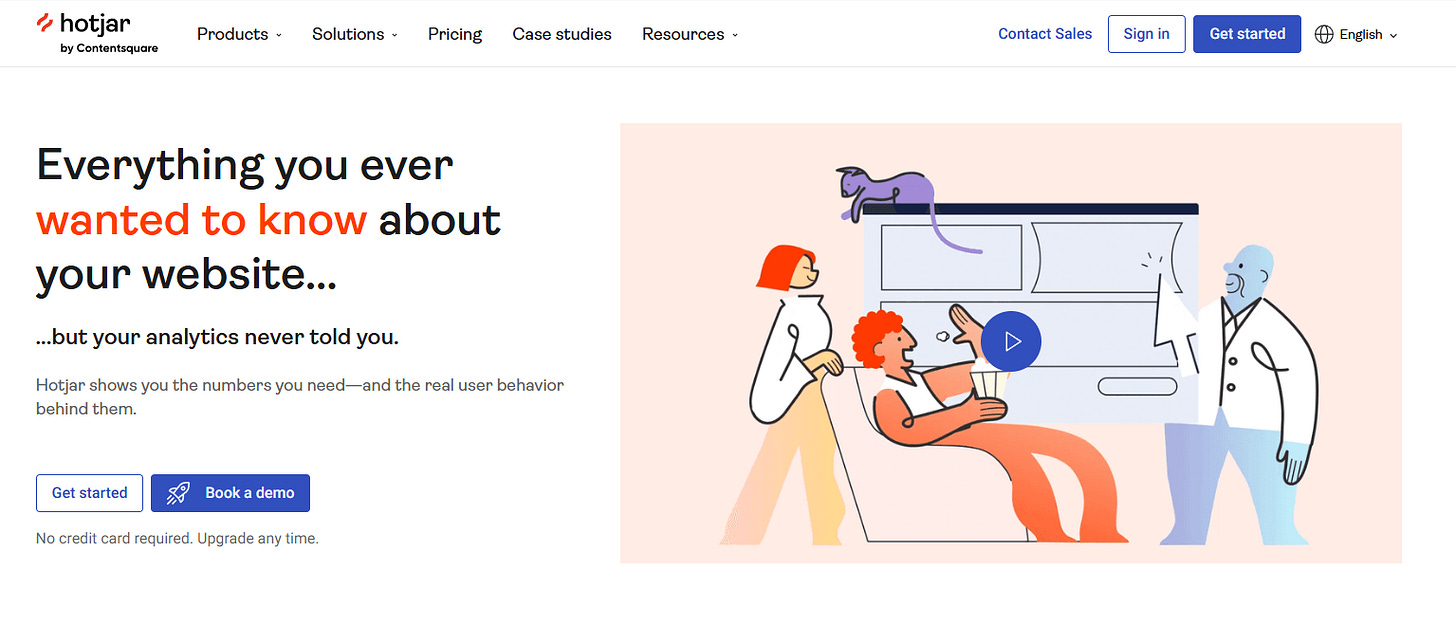The Hidden Micro-Friction That's Killing Your Conversion Rates
How small UX friction points compound into massive conversion losses
I remember this one project where they wanted to collect everything during onboarding. "Where did you hear about us?" "What do you want to use this product for?" "Tell us about your company." I kept suggesting they avoid this for now, but they insisted on adding it. I tried my hardest until the last minute to make them understand that as a new product, onboarding should be much more seamless and easy. This kind of detailed data collection creates micro friction, a silent disaster that can change everything.
What is Micro-Friction?
Micro-friction refers to those small, seemingly harmless obstacles that create resistance when users interact with your product. Unlike major UX disasters that users actually complain about, micro-friction operates quietly. It's like death by a thousand paper cuts that slowly drains your conversion rates, user retention, and ultimately, your startup's chances of survival.
Think of micro-friction as digital sandpaper. Each individual grain feels barely noticeable, but together they create enough resistance to stop users completely.
(Source: PaymentsJournal on User Experience Friction)
The Numbers Don't Lie
The statistics around micro-friction are brutal, and most founders don't realize how much it's costing them:
Almost 90% of startups fail, and while everyone talks about funding issues, user experience friction plays a much bigger role than most people think. Here's what the research actually shows:
74% of potential customers will switch to other solutions if the onboarding process is complicated. That means 3 out of 4 people will just walk away if you make things too difficult.
If the digital onboarding process takes longer than 20 minutes, 70% of customers completely abandon their attempt. Twenty minutes. That's not even enough time to watch a sitcom episode.
40% of millennials who applied for a bank account dropped out during the onboarding process, citing lengthy, time-consuming verification processes.
But here's the part that should keep you up at night: 90% of users churn without strong onboarding. They're not telling you what's wrong. They're just disappearing.
(Source: UserGuiding User Onboarding Statistics)
(Source: HubSpot Customer Onboarding Stats)
The Sneaky Friction Points That Kill Startups
The Data-Hungry Registration Process
Your sign-up form is often the first real interaction users have with your product. Every additional field you require reduces conversion rates. Email, password, confirm password that's already three steps. Add "How did you hear about us?", "What's your use case?", phone verification, company details, or mandatory newsletter subscriptions, and you've built a wall instead of a door.
I have seen startups lose 60% of potential users just because they wanted to know "a little more" about their audience during registration.
The Loading Screen That Never Ends
Users expect pages to load in under 3 seconds. Beyond that, you're not just losing patience, you're losing customers. Mobile users are even less forgiving, often abandoning sites that take more than 2 seconds to load.
The Password Complexity Nightmare
"Password must contain 8 characters, including uppercase, lowercase, numbers, and special characters, but not these specific ones, and it can't contain your name or any dictionary words." Congratulations, you've just turned account creation into a puzzle game nobody wants to play.
The Navigation Maze
Users shouldn't need a treasure map to find basic features. If they can't locate what they're looking for within 10 seconds, they'll assume it doesn't exist. Complex menu structures, unclear labeling, and hidden functionality create friction that compounds with every single click.
The Mobile Afterthought
Most users access content on mobile devices now, but many startups still design for desktop first. This creates clunky mobile experiences that frustrate the largest segment of potential users.
(Source: ProductLed on Onboarding Friction)
How Small Problems Create Big Disasters
Micro-friction doesn't just cause individual user drop-offs. It creates a compound effect that can systematically destroy your startup:
Customer Acquisition Cost Explosion: Every friction point reduces conversion rates. This means you need more traffic to get the same number of customers. Your marketing spend goes up while your conversion rates go down.
Reduced Lifetime Value: Users who struggle through your onboarding process are more likely to leave early. They never fully engage with your product because their first experience taught them it's difficult to use.
Negative Word-of-Mouth: While unhappy users might not complain directly to you, they'll share their frustrations with friends, colleagues, and social networks. Bad experiences spread faster than good ones.
Team Resource Drain: High friction leads to more support tickets, more confused users, and more time spent explaining what should be obvious. Your team spends time fighting fires instead of building features.
(Source: Userpilot Customer Onboarding Statistics)
The Hidden Cost of "Just One More Field"
Let me tell you what happened with that project I mentioned. They wanted to collect user research data during onboarding. "It's just a few questions," they said. "We need to understand our users better."
Here's what actually happened:
Registration completion dropped by 45%
Time-to-first-value increased by 8 minutes
Support tickets about "account issues" tripled
User activation rates fell by 32%
All because they wanted to know where users heard about them and what they planned to use the product for. Information that would have been much more valuable to collect after users experienced the product's value.
Finding Friction in Your Product
The tricky thing about micro-friction is that it's often invisible to founders and team members who know their product inside and out. Here's how to spot it:
Fresh Eyes Testing
Bring in people who have never used your product. Watch them navigate without any guidance. Every moment of hesitation, every confused click, every "Where do I...?" question reveals a friction point.
Analyze Your Funnel Data
Look beyond overall conversion rates to micro-conversions. Where do users pause? Which pages have high bounce rates? Which features have low adoption despite being prominent?
Heat Maps and Session Recordings
Tools like Hotjar or FullStory show user behavior patterns that regular analytics miss. Dead clicks, rage clicks, and abandoned form fields tell the real story of friction.
Mobile-First Testing
Test everything on mobile first. If it works smoothly on a small screen with a thumb, it'll work everywhere.
(Source: GrowthMentor User Onboarding Friction)
The Friction-Fighting Playbook
Start with the Critical Path
Identify the most important user journey in your product, usually from landing page to first real value. Map every single step and ruthlessly eliminate anything unnecessary.
Progressive Disclosure is Your Friend
Don't overwhelm users with everything at once. Start with the minimum viable interaction and gradually reveal complexity as users show they're engaged.
Design for Thumbs, Not Cursors
Mobile-first design isn't just about responsive layouts. Think in terms of thumb-friendly interactions, readable text sizes, and touch-optimized interfaces.
Test with Real-World Constraints
Test your product on slower networks, older devices, and in noisy environments with distractions. Real users don't have perfect conditions.
Create Friction Maps
Document every step in your key user journeys. Rate each step's friction level and prioritize improvements based on impact and effort required.
(Source: Product Fruits User Onboarding Trends)
Building a Friction-Aware Culture
Fighting micro-friction isn't a one-time project. It's an ongoing commitment to user-centered design:
Build Friction Awareness: Train your team to recognize and flag potential friction points during development, not after launch.
Establish Friction Metrics: Track metrics like time-to-first-value, task completion rates, and micro-conversion rates alongside traditional business metrics.
Create Feedback Loops: Since most frustrated users don't complain, create proactive ways to gather feedback through quick surveys, user interviews, and regular usability testing.
Prioritize Mobile Experience: Make mobile performance and usability a first-class concern, not something you'll "optimize later."
The Real Cost of Ignoring Friction
21.5% of startups fail in their first year, 30% in the second year, and 50% in their fifth year. While money running out gets blamed most often, the real question is: why did the money run out?
Often, it's because user acquisition costs were too high and retention was too low. Both directly caused by friction that could have been avoided.
86% of customers say they will remain loyal if onboarding and continuous education are provided. That's a huge opportunity that most startups miss because they're focused on collecting data instead of delivering value.
(Source: Startup Failure Rate Statistics)
The Bottom Line
In a world where users have infinite alternatives and zero patience for poor experiences, micro-friction can determine whether your startup thrives or becomes part of the failure statistics.
The startups that survive and scale are obsessed with user experience at the micro level. They understand that removing friction isn't just about making things easier. It's about removing barriers between users and the value their product provides.
Your users' time and attention are precious. Every moment of friction signals that you're not respecting that gift. In return, they'll give that gift to a competitor whose experience feels effortless.
The question isn't whether you can afford to invest in reducing micro-friction. The question is whether you can afford not to.
Remember that project I mentioned at the beginning? They eventually removed those onboarding questions after three months of declining conversions. Within two weeks, their sign-up rates increased by 40%. Sometimes the best feature is the one you don't build.
Start measuring, start testing, and start removing the sandpaper from your user experience. Your startup's survival might depend on it.
Research Sources:






